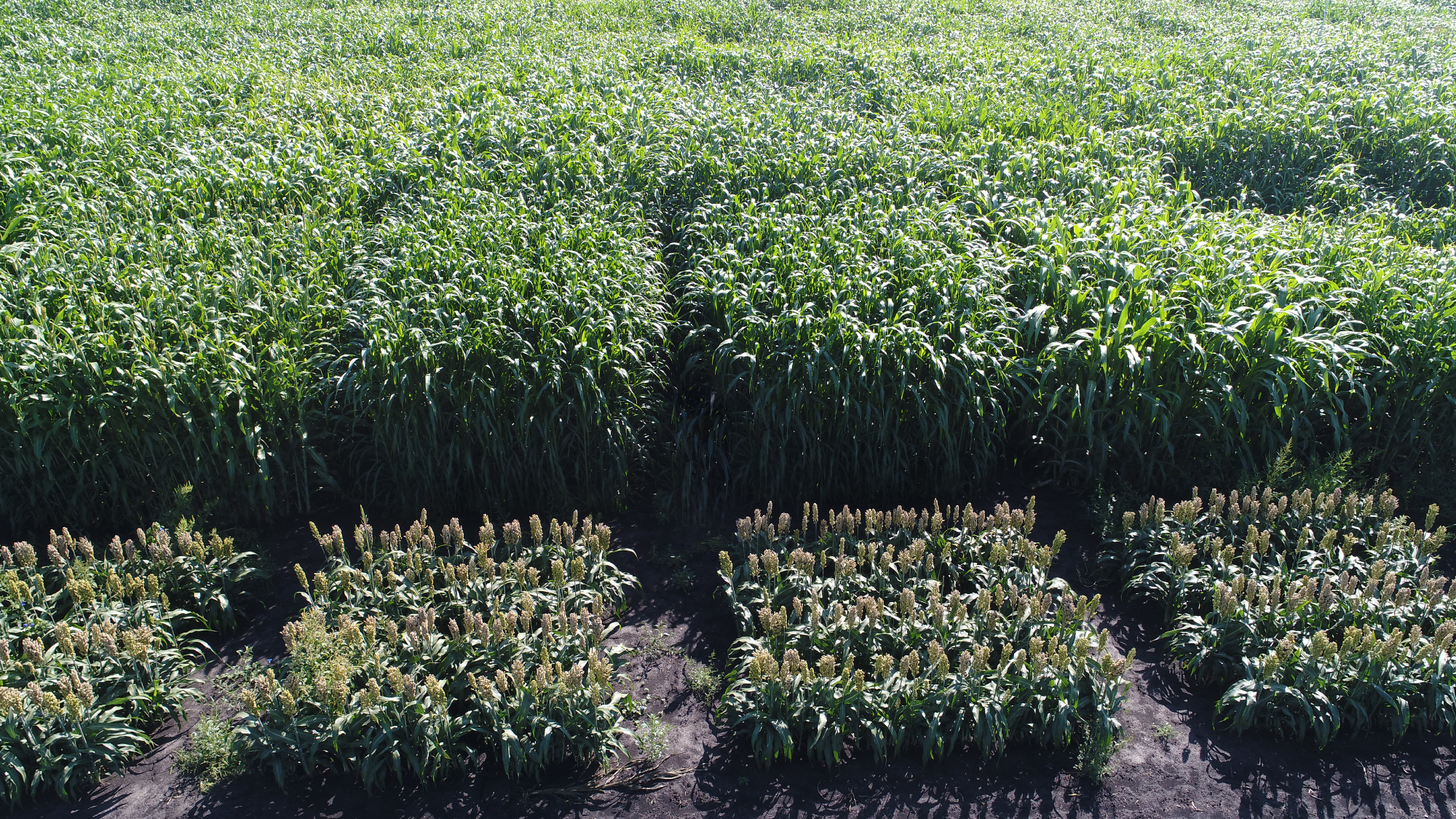Nov 6 2020
Despite the continuous increase in carbon dioxide (CO2), the United States has backed out from the Paris climate accords.
 The WEST project sorghum diversity panel field trials from 2017. Image Credit: WEST project.
The WEST project sorghum diversity panel field trials from 2017. Image Credit: WEST project.
Plants can convert CO2 into yield through the process of photosynthesis. Logically, with more CO2, crop production should increase. However, a new study at the University of Illinois reveals that certain crops, such as corn, are adapted to pre-industrial conditions and cannot spread their resources effectively to leverage additional CO2.
A majority of plants (such as canola, rice, soybeans, and all trees) are C3 crops since they fix CO2 initially into a carbohydrate comprising three carbon atoms. Sugarcane, sorghum, and corn belong to a unique group of plants called C4.
This name arises as they initially fix CO2 into a four-carbon carbohydrate at the time of photosynthesis. Typically, C4 crops are 60% more productive compared to C3 crops.
The study demonstrates that growing crops in an elevated CO2 similar to future atmospheric conditions will make the C3 crops more productive, whereas some experiments indicate that C4 crops would be no longer productive in a world with higher CO2.
As scientists, we need to think several steps ahead to anticipate what the Earth will look like five to 30 years from now, and how we can design crops to perform well under those conditions. We decided that a literature review and a retrospective analysis of biochemical limitations in photosynthesis would be able to give us some insight into why C4 crops might not respond and how we might alter this.
Charles Pignon, Former Postdoctoral Researcher, University of Illinois
The literature review was financially supported by Water Efficient Sorghum Technologies (WEST), a research project that targeted at developing bioenergy crops that generate more biomass with less water, with funding received from the Advanced Research Projects Agency-Energy (ARPA-E). The study has been published in the Plant, Cell & Environment journal.
The research group gathered a dataset of photosynthesis measurements from 49 C4 species, such as the crops that could exhibit photosynthetic drawbacks.
The stable pattern found was that at low CO2—far less than what plants would have been exposed to before the industrial revolution—C4 photosynthesis was restricted by the activity of the enzyme that fixes CO2. But at current CO2 levels, C4 photosynthesis was restricted by the potential to offer the three-carbon molecule that accepts the fourth CO2.
This finding is analogous to a car assembly line where the supply of engines is outpacing the supply of chassis to accept them. We need to engineer these plants to better balance their resources in one or both of two-ways.
Stephen Long, Study Co-Author and Stanley O. Ikenberry Chair Professor of Plant Biology and Crop Sciences, University of Illinois
Firstly, the researchers propose that C4 crops must reduce the quantity of the enzyme utilized to fix CO2 and re-invest the saved resources to make more of the CO2 acceptor molecule.
Then, they must limit the CO2 supply to the leaf by decreasing the number of pores (stomata) on the surface of the leaf.
Lowering the CO2 within the leaf would re-optimize the biochemistry, without lowering the rate of photosynthesis, and with fewer stomata, less water would be lost so we are increasing the crop’s water use efficiency.
Stephen Long, Study Co-Author and Stanley O. Ikenberry Chair Professor of Plant Biology and Crop Sciences, University of Illinois
The WEST project was completed in 2019. These suggested changes to C4 crops are currently being carried out via the Center for Advanced Bioenergy and Bioproducts Innovation (CABBI), which is financially supported by the Department of Energy.
Journal Reference:
Pignon, C P & Long, S P (2020) Retrospective analysis of biochemical limitations to photosynthesis in 49 species: C4 crops appear still adapted to pre-industrial atmospheric [CO2]. Plant, Cell & Environment. doi.org/10.1111/pce.13863.